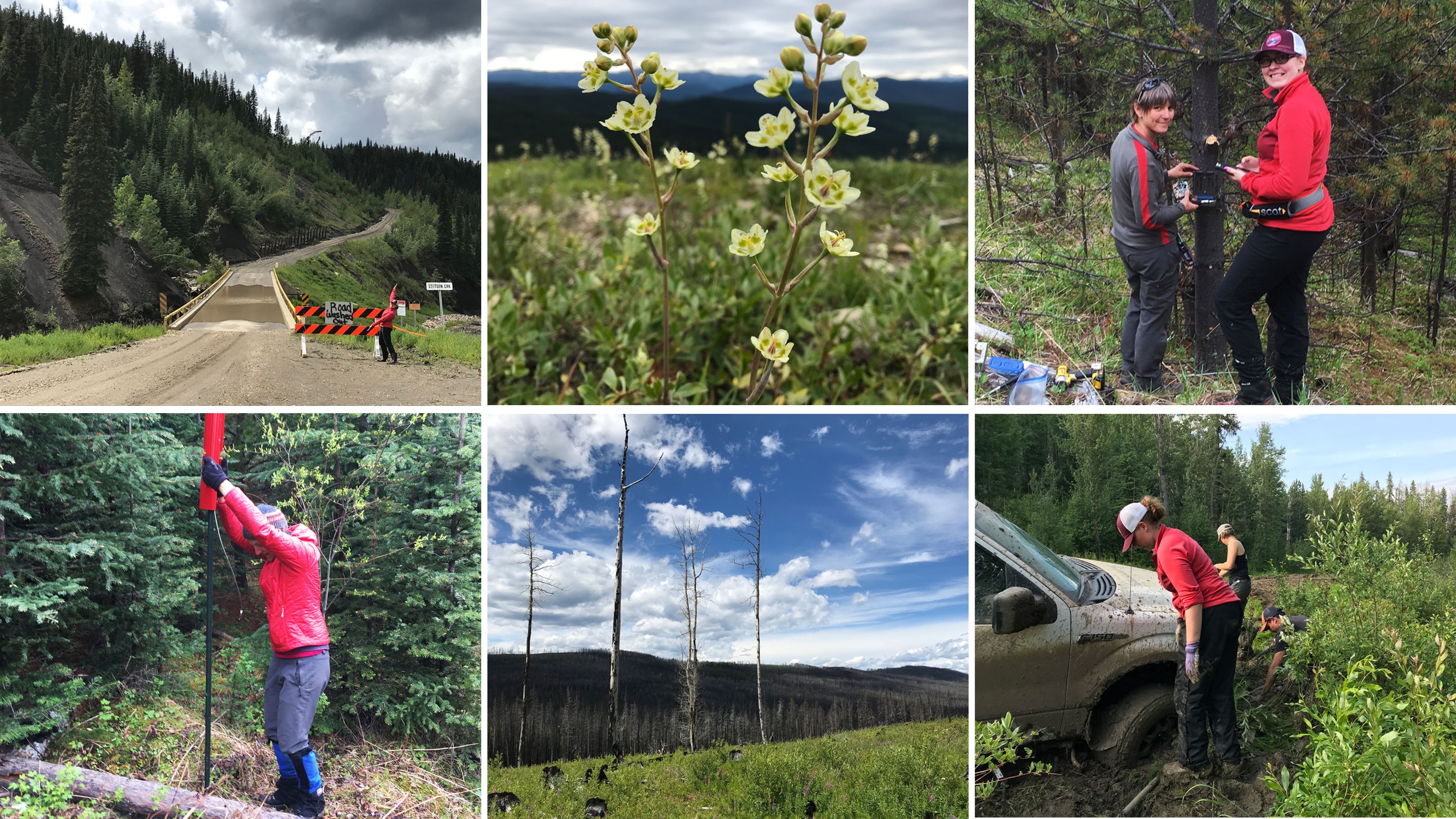Tracy McKay and Laura Finnegan share their latest research investigating what affects ungulate occurrence in forest harvest blocks in west-central Alberta, Canada.
Five years ago, our research group developed an idea with forest companies to help conserve woodland caribou – Rangifer tarandus, the same species as the Eurasian reindeer – in western Canada.
Summer after summer, our crews drove the mud and gravel roads spiderwebbing through Alberta’s boreal forest collecting vegetation data and setting up 119 trail cameras in forest harvest blocks. After hundreds of thousands of photos, and almost as many mosquito bites, we had plenty of pictures of white-tailed and mule deer, moose, elk, black bears, brown bears and many other critters.
As we had expected, we didn’t see many caribou.

Caribou usually avoid human disturbance, though the ranges of some herds are so sliced up by roads, pipelines and other linear features that there aren’t many big patches of intact forest left. The issue is apparent competition – moose, deer and elk populations boom in the young forest created by human activity, and this draws in predators, raising the risk for caribou.
Overall, harvest blocks in caribou ranges amplify the risk of predation but they come in all shapes and sizes. After harvesting, the forest company also applies a combination of silvicultural treatments. Depending on the site, they might use machinery to prepare the soil for seedlings, which could be planted in a whole range of densities. They may also control grasses, shrubs, and aspen saplings with mechanical or chemical weeding.
We suspected these treatments have ecological effects. If we could find out which kinds of harvest blocks draw the most moose, deer and elk, then future forest harvests in caribou ranges could be designed to have a smaller impact on caribou.
Our study
So, we collected field data on 42 plant and tree species plus 50 features of the harvest blocks and the surrounding area; coded thousands of wildlife photos; and modelled how they are connected. As hoped, we learned a lot about the ecological effects of harvests blocks in Alberta and discovered things that forestry companies could use to help reduce apparent competition on caribou.

First, we found that ecological effects vary seasonally. Overall, deer, elk and moose occurrence was higher in summer than winter (the snow can be really deep in clearings, so this makes sense), implying increased caribou predation risk during the summer.
Perhaps unsurprisingly, another major factor is the time since harvest, with moose, deer and elk all preferring younger harvest blocks, providing more confirmation that early seral stage forest is attractive habitat for these species.
We also found that both species of deer had lower occurrence in harvests blocks that had been more densely replanted, and weeding also reduced the occurrence of mule deer, perhaps because both treatments tend to reduce the amount of forage available. Moose were drawn to cutblocks with more willow (Salix), horsetail (Equisetum), and Viburnum; and moose, deer and elk were all drawn to cutblocks with more Canadian reedgrass (Calamagrostis canadensis).
We know that the solution isn’t as simple as just designing cutblocks to control those forage species and plant trees in high densities. For forest managers, caribou conservation is just one of many operational considerations to balance. Moose, deer, and elk are culturally and ecologically important in their own right, as are the plants species that they use as forage and cover.
Our study isn’t a silver bullet, but it does contribute practical ideas to conserve a species that needs all the help it can get.
Read the full article: “Ungulate occurrence in forest harvest blocks is influenced by forage availability, surrounding habitat and silviculture practices” in Issue 4:2 of Ecological Solutions and Evidence.
